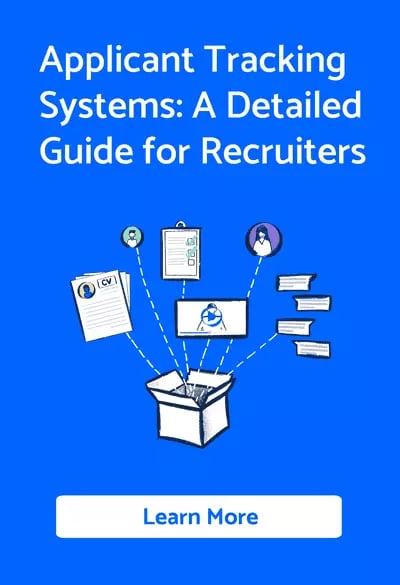Employees are the driving force behind any company. Everyone wins if they're competent and content. The best way to ensure that is to develop a hiring strategy. Said strategy identifies specific roles that need filling and helps you attract the right people.
More than 50% of prospective employees wouldn't want to work at a company that gave them a poor recruitment experience. This article will help you avoid the pitfalls.
What is a Recruitment Strategy Anyway?
Think of a recruitment strategy as the sum of a company's actions to create an optimal recruitment process. At its core, it involves planning steps that aid the sourcing, recruitment, and onboarding of the best-fitting candidates.
While important, the hiring process is a single facet of a comprehensive hiring strategy. Others include defined company culture and established expectations from employees. Building your brand and establishing a reputation for factors like innovation or workplace satisfaction greatly helps draw in the right talent.
Want to hire better people? 🤔
GoHire is the a fuss-free hiring platform for SMBs to simplify hiring and hire the best people, fast.
What Are the Benefits of a Hiring Strategy?
Employing the right people has far-reaching consequences for the success and growth of your business. These are the key benefits a well-thought-out strategy brings for everyone involved.
Increased chances of finding the perfect fit
A company with exact expectations based on careful assessment is far more likely to hire someone with the right skill set and outlook. This increases the hiring success and may even persuade the competition's talent to work for you instead.
Consistency and clarity
Once you develop a hiring strategy, you can adapt it to fill any position faster and more efficiently. A clear plan helps create targeted job descriptions more likely to attract desired talent. Having guidelines also ensure greater transparency and impartiality when making hiring decisions.
It saves time and cuts costs
On average, the hiring process takes anywhere from three to six weeks. Streamlining various aspects of the process will let you find the right candidate faster. That means you can spend less time and resources on the search. You may then dedicate more to training and onboarding, ensuring the new hire can integrate better into the company environment.
Finding good hires now saves money in the long term. A competent employee will take less time to integrate. They'll make meaningful contributions faster. They’re also more likely to develop into dependable assets that can help the company grow even more.
Lower turnover rates and better job satisfaction
A stable working environment improves everyone’s morale. Happy employees get things done and are less likely to seek other opportunities. Low turnover helps strengthen your company's position as a desirable employer. Moreover, the less you rehire, the less time and resources you spend on retraining.
How to Create a Successful Hiring Strategy
Creating a successful hiring strategy is an involved process. You can break it down into these steps to make things easier and more consistent.
1. Assess your existing strategy
Assuming your company already has a hiring strategy, it's worth examining in detail. That will let you see what worked in the past and highlight aspects of the strategy that need improving.
2. Outline your needs
Now it’s time to examine the role that needs filling. Take stock of what its responsibilities are and what metrics you can use to track a hire’s progress. Reach out to their immediate manager and get their take on the specifics.
This may highlight some criteria you overlooked, like familiarity with the latest office management software such as Flanco or a specific quality the team they will be joining insists on.
3. Create a tailored job description
Once you know who you’re looking for, creating an attractive job description becomes more accessible. A successful description should blend clarity, relevance, and enticement.
Candidates will appreciate a job posting that accurately depicts what it’s like to be working for you. Setting clear expectations from the get-go will attract the right talent, especially if you frame the posting to appeal to people with previous experience in the field.
Prospective employees may want to work remotely part of the time. They’re more likely to bite if you highlight opportunities for them. For example, mention your practices in keeping remote employees’ data safe and private while offering training to remote positions on what to do with a VPN and how it can benefit both company and employee privacy.
4. Determine where to look
There are many ways to reach out to the right talent. Which you should use depends on the position. Job fairs and general boards are suitable for entry-level positions. You may need to turn to professional platforms or consult existing employees if the role is more specialised.
5. Develop an interview plan
A gauntlet of interviews will help shrink the applicant pool and expose potential unwanted traits. For example, a candidate may be skilled and competent but must be a better cultural fit.
Conduct interviews in a matter that can expose such weaknesses and get their future teammates on board. Even so, use the interview as a chance to solidify candidates' positive perceptions of their potential workplace.
6. Follow through and gather data
Once you find the perfect candidate, extend an offer before someone else does! Remember to document successful hiring to help improve your strategy for the future.
Conclusion
A well-crafted hiring strategy is crucial for achieving a competent and content workforce. By identifying specific roles, attracting the right candidates, and implementing effective onboarding processes, businesses can increase their chances of finding the perfect fit, maintain consistency, save time and costs, reduce turnover, and enhance job satisfaction. Taking steps to develop a successful hiring strategy, such as assessing existing practices, outlining role needs, creating tailored job descriptions, determining recruitment channels, developing interview plans, and gathering data, will contribute to long-term success and growth for organizations.




